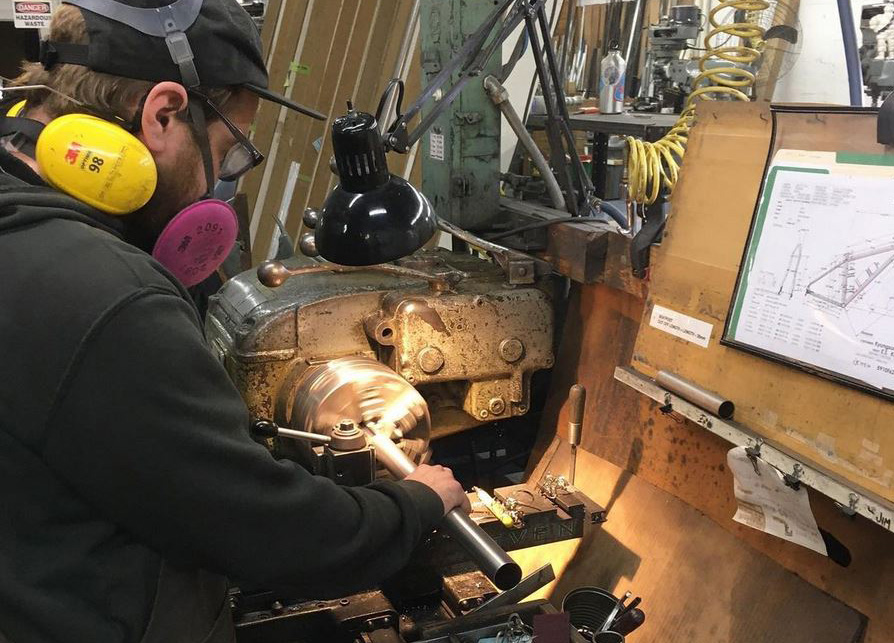Collated in an ordinary manila folder are the details of your new bike. Body measurements, preliminary sketches, notes, revisions, and final drafts are all there, as is the signed confirmation form perched right on top. To non-cyclists, a loose sheaf of papers like this might not get the blood flowing, but it works for us, and probably does for you, too.
This paperwork, after all, is the blueprint to a bike that has never been seen before, a bike designed to make your favorite rides even better, a bike specifically for you.
Dan Cariolo, our production manager, takes that ordinary folder from the design team and walks it back to the shop floor.
Your ordinary folder turns extraordinary when it gets passed to a framebuilder who spreads the paperwork out on the desk in the machinists’ office. Looking over the confirmation form, the idea that spawned your bike begins to shine through. Each detail reveals a little more about you, and a little more about how your bike will be ridden.
With these pieces of information dancing in the framebuilder’s mind, a build sheet comes to life. It contains a CAD drawing, a tubeset specification, tube diameters, wall thickness or carbon fiber orientation, brake routing and type, and every other detail related to the construction of your bike. All the information, from the length of each tube to the color of the final decal, are on that build sheet.
Next comes a non-descript, cardboard box, three feet long, 6 inches wide.
With the drawing in hand, the builder slowly fills that box with a bike. The first part added to the box is the drive side drop out, which is important for two reasons. First, it will have your serial number stamped into it with hammer and anvil. More importantly though, this is the moment when your bike officially transforms from an idea to a physical reality.
We are underway.
Standing on end, extending from floor to ceiling 20 feet up, hundreds of titanium and carbon tubes form a wall that isolates the machining department from the rest of the production floor. Behind that wall, hulking lathes and mills, some of them built nearly seventy years ago, refine the raw metal parts of your frame to exacting tolerances. Presses, tube benders, fixtures, vices, anvils, files, and adjustable jigs fill in the surrounding gaps, a metal landscape, no breeze, no sunlight.
A lone strand of ivy, growing from a strategically placed mason jar, is the only green to be found, and yet the whole department buzzes with life.
Framebuilders work the floor, moving from one machine to the next, flipping levers, sliding gauges, and taking measurements at each step. Yellow hole saws go round and round, coping each tube to fit precisely with the next. The machinists’ arms pump up and down forcing the red hydraulic press to create the shapely “s” bend curves in the chain and seat stays.
Each machine makes its own distinct sound and competes for air space with the music streaming from the radio. Lathes spin endlessly, shaving off material as they go. Belt sanders remove tiny burs from tube ends, with a high-pitched grating and a shot of sparks, the entire process a symphony for eyes and ears.
When the performance is over and each of your frame’s parts is machined to absolute perfection, the bike takes its true shape for the first time. The non-descript, oblong box slowly empties as the builder, CAD drawing in hand, loads the frame jig. Head and seat tube angles are locked in place, distances measured, each tube inserted fills in the puzzle until, there, assembled for the first time, hangs your frame.
And the ensemble sings.
After a moment of appreciation, the framebuilder disassembles your frame, puts it back in the box, and wheels it, jig and all, to the welding department.
This is part one of a four-part series on the Seven framebuilding process. Be sure to check out parts two, three, and four to learn the whole story.

